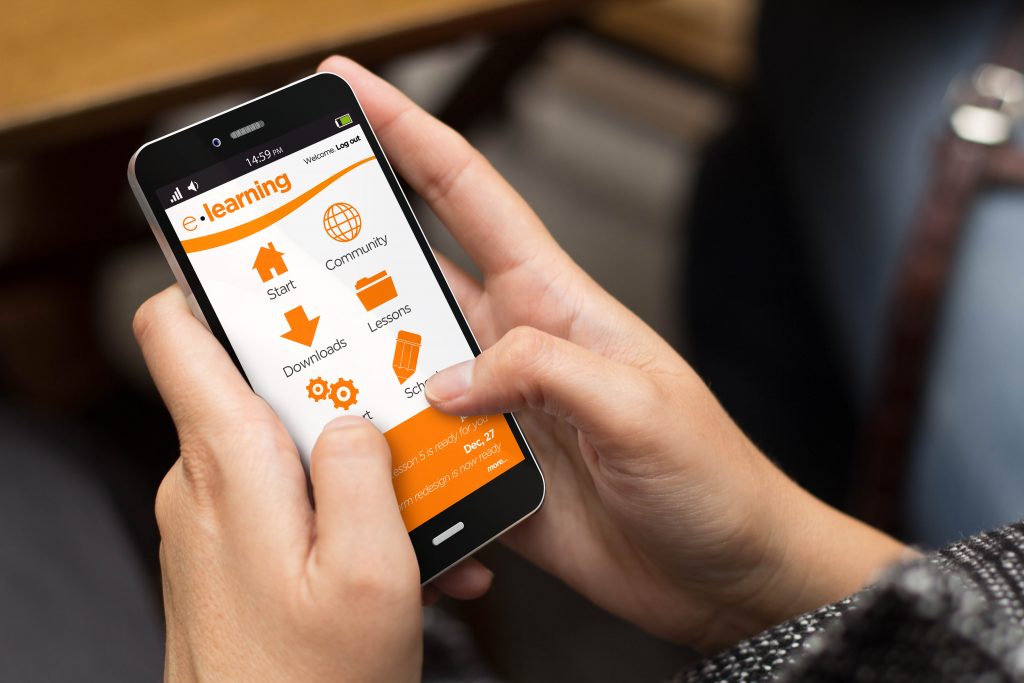
Increasingly, people are using mobile devices to work, play and learn. Organizations, at varying paces, are responding to this change particularly on how they offer digital learning content to their employees. Training teams are challenged by creating learning experiences that are exceptional on desktops, phones, and tablets. Selecting a responsive authoring tool is an important step towards engaging learners across multiple platforms; however, adjusting your design practices are just as important. According to the eLearning Industry, here are some important mobile learning best practices to use when designing learning and/or looking for good m-learning to include in your classroom.
Create short, micro modules.
Keep modules under 5 minutes. If you must break content into sub-topics, perhaps aligning it to only one learning objective. One course could consist of several short modules. Linked-in-Learning courses execute this really well. One course is broken down into several short videos that sometimes are only a few minutes long.
Ensure your courses are mobile responsive.
Start by selecting a responsive authoring tool (e.g., Rise, adapt) and then test your module across multiple platforms.
Make the module engaging.
Leverage pictures, videos, and interesting design to present the content in an interesting way.
Make the module easy to use.
Make the design simple and easy for the learner to navigate and interact with.
Use tracking data.
Where you can, collect feedback from the learners. Kirkpatrick’s level 1 and 2 evaluation surveys can help achieve this. More sophisticated LMS providers will allow learners to rate their learning experience and leave comments (Workday).
https://elearningindustry.com/7-mobile-learning-best-practices-thriving-training

I believe creating mobile learning platforms will eventually be used by educators. We already started lesson planning, assigning homework, and adjusting students’ work through e-learning platforms. Short videos and nano-learning strategies are my favorite type of learning and teaching, it is easy, practical, and works for almost all types of learners, and that is the beauty of mobile learning; it fits so well with micro-learning. Sustainability and the use of data are also the two crucial elements for improvements in optimal results.
I am most interested in tracking the data, therefore, analyzing the social interaction or supportive learning. As it reflects whether learning has occurred, how they have learned, and what did they learn. For example, social network analysis reviews the engagement between the learners by allowing instructors to analyze their interaction using various visualization tools. The instructor can determine who is highly active within the group and the isolated learners. It gives them insight into whether engagement is actually occurring and if their module sparks interest among learners to foster discussion.
For example, Threadz in Canvas allows the instructor to analyze discussion forums graphically: https://www.youtube.com/watch?v=6aTJE6zg7V4
However, there are free and open-source SNAs such as SocNetV: https://socnetv.org/.
It is critical in mobile education that instructors can identify what is effective in student learning, and one approach is using visualization tools for social network analysis.
Thanks for sharing Elizabeth and Anna. The best practices are great, and I too am intrigued by analytics. Data is definitely an asset to keep developers and their apps evolving and improving. The trend seems to be that you can’t just build it, and an audience will materialize and stay — instead you need to continually improve the platform and experience in order for continued success.
I feel like a need for analytics was hammered home in my heavily mobile pandemic teaching (lots of multi-student households with one desktop and many phones).
Teachers who were able to leverage quick and easy data collection modules were more effective at driving engagement.